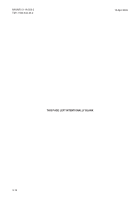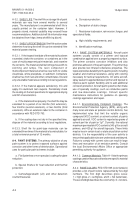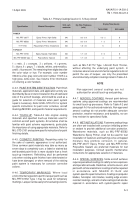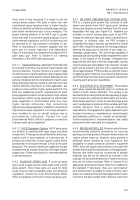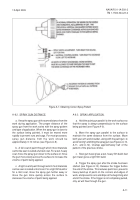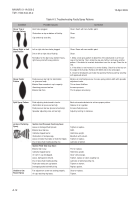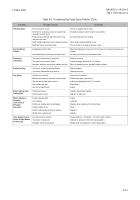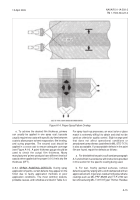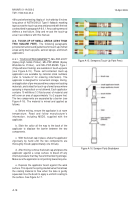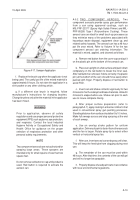TM-1-1500-344-23-2 - Page 180 of 240
A-10
NAVAIR 01-1A-509-2
TM 1-1500-344-23-2
15 April 2009
faying surface joints or fasteners and sharply protruding
objects or corners shall be scuff sanded by hand to
avoid sanding through the coating. After scuff sanding,
remove dry residue using clean cheesecloth
(CCC-C-440) dampened with water, followed by wiping
with clean cheesecloth dampened with thinner
(MIL-T-81772 Type I).
A-7.2.
DRYING. All surfaces to be painted shall be
thoroughly dry prior to painting. After cleaning, special
precautions shall be taken to assure proper drainage of
all liquids from between faying surfaces, crevices, and
pockets, preferably by permitting the aircraft or
component to stand for a sufficient time to permit such
drainage. If necessary, isopropyl alcohol (TT-I-735)
may by sprayed into seams or fastener patterns after
cleaning to ensure displacement of water in these
areas. Ensure that areas surrounding the area to be
painted, especially crevices and faying surfaces, are
also dried prior to painting to prevent drainage onto the
work surface.
A-7.3.
FINAL INSPECTION AND PREPARATION.
a. Inspect surface to be painted to ensure all
corrosion has been properly removed. Surfaces must
be cleaned and properly treated using chemical
conversion coating (see Chapters 2 and 5, respectively).
If chemical conversion coating is scratched or damaged,
the area must be retreated in accordance with Chapter 5.
b. Replace any seam sealants if necessary, as
described in Chapter 7.
c. Mask surrounding areas to protect from paint
overspray. Paint masking tape (AMS-T-21595 Type I)
and brown masking paper (A-A-203) are suitable for
most masking requirements. For touch-up spray
applications, it is often desirable to mask to a seam or
line to prevent the appearance of a paint edge after
masking material is removed.
A-7.4. SOLVENT WIPE. Surfaces must be completely
clean prior to painting. Failure to remove all oils, greases,
aircraft fluids, fingerprints, or other contaminants will
lead to coating adhesion problems and premature
corrosion.
A-7.4.1. Clean surfaces immediately prior to painting
by solvent wiping with clean cheesecloth (CCC-C-440
Class 2) or cleaning cloth (AMS 3819 Grade A or
equivalent) dampened with an approved solvent
(MIL-T-81772 Type I, AMS 3166, or equivalent).
A-7.4.2. Environmentally Compliant Solvents.
Environmental regulations in most locations prohibit the
use of wipe solvents with vapor pressures greater than
45 millimeter of mercury (mmHg). The vapor pressure
of MIL-T-81772 Type I and AMS 3166 is approximately
35 mmHg or less.
A-8. GENERAL
PAINT
APPLICATION
PROCEDURES.
The following procedures are general
rules to be followed when applying paint. For more
detailed information on the application of paint finishes,
refer to MIL-STD-7179 (Finishes, Coatings, and Sealants
for the Protection of Aerospace Weapons Systems).
WARNING
Aircraft shall be electrically grounded during all
painting procedures in order to guard against
the danger of fire from static electricity.
A-8.1. GENERAL SPRAYING TECHNIQUES.
a. Prior to spraying, the gun should be checked to
ensure that it produces the proper spray pattern.
Figure A-7 shows correct spray patterns and tips on
how to achieve them. Table A-3 shows incorrect patterns,
causes, and suggested remedies.
b. Always have the spray gun in motion before
spraying.
c. Keep the spray gun at a consistent distance from
the work during application.
d. Move the spray gun across the work at a consistent
speed.
e. For large surfaces, trigger the spray gun after
beginning and before ending each stroke.
f. Start the first stroke at the same point on each
similar object.
g. Always overlap half of the pattern of the previous
stroke.
h. On similar pieces of work, always try to use the
same number of strokes or passes.
i. End the last stroke in the same place on similar
objects.
Back to Top

